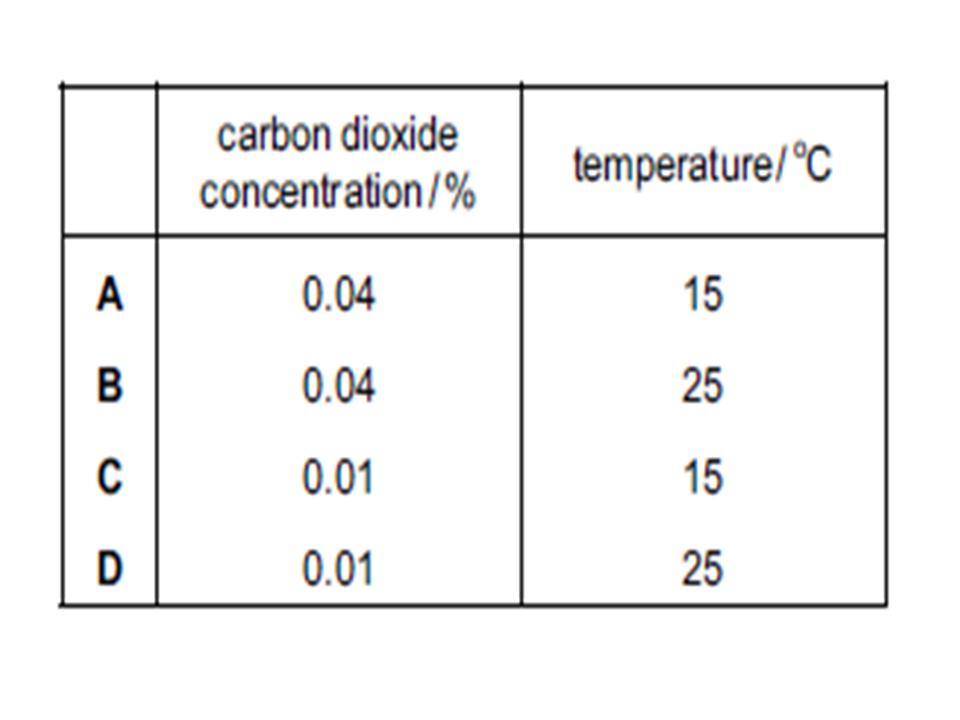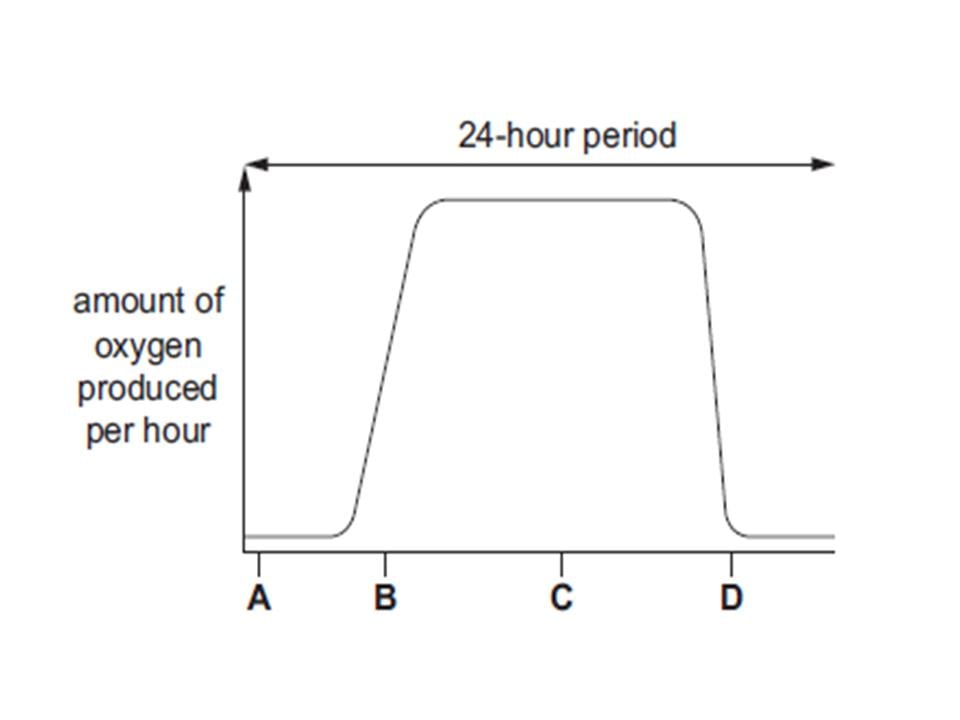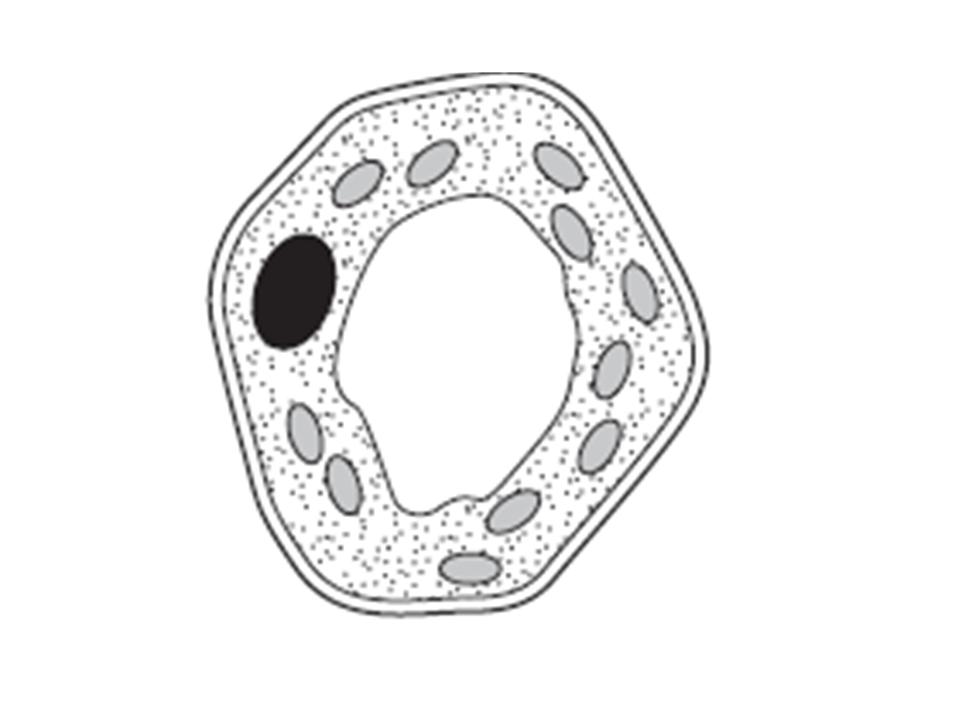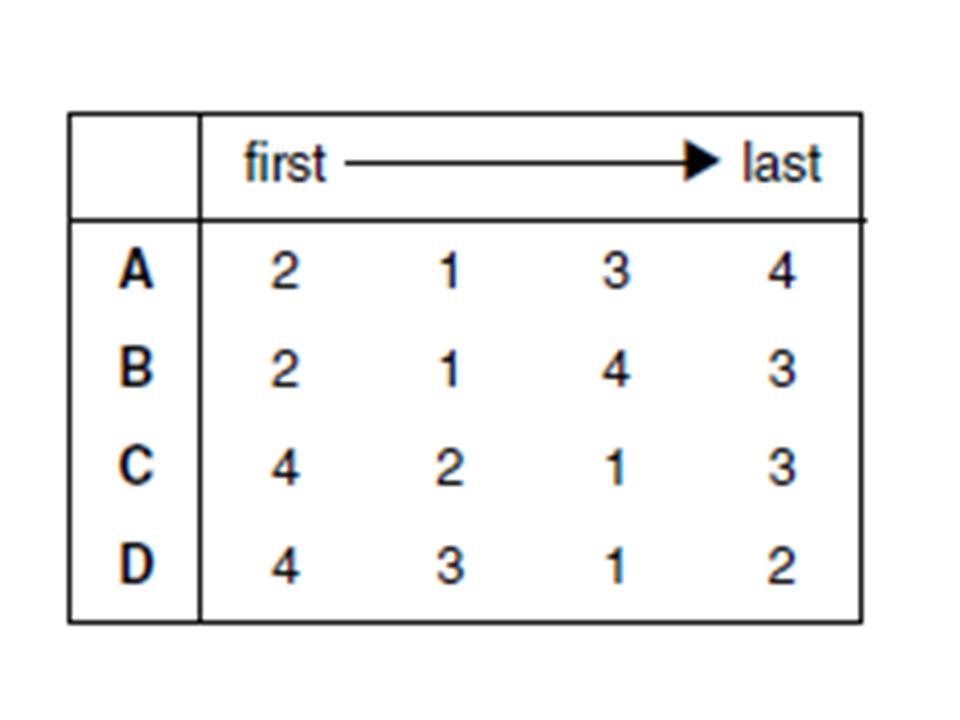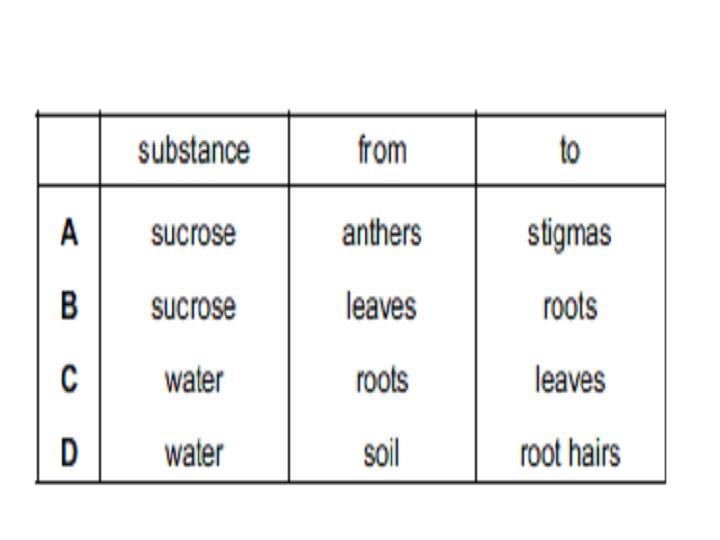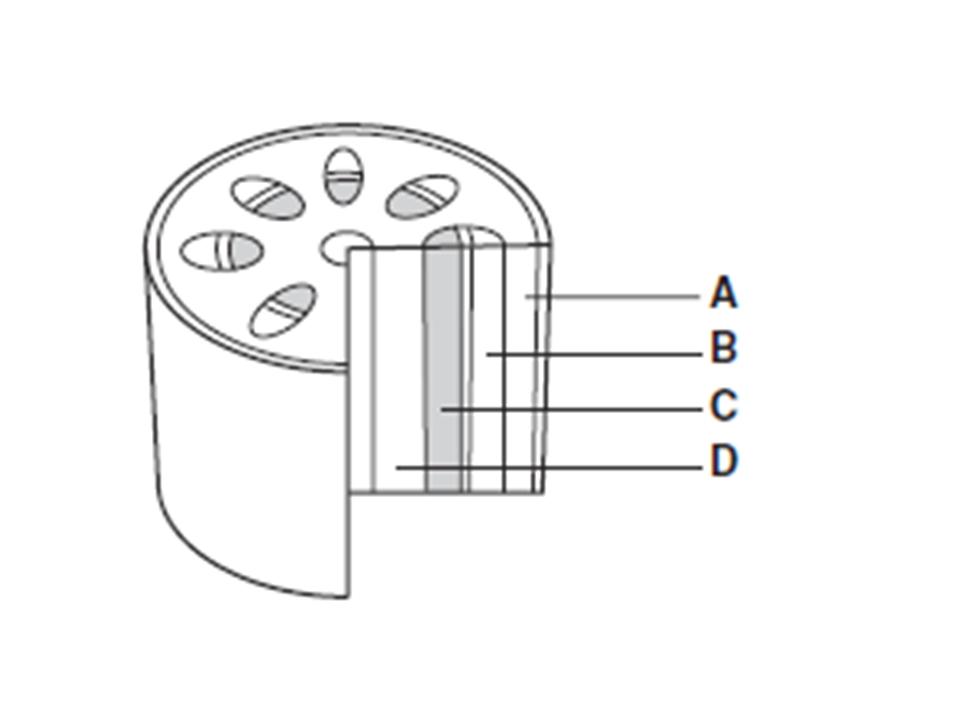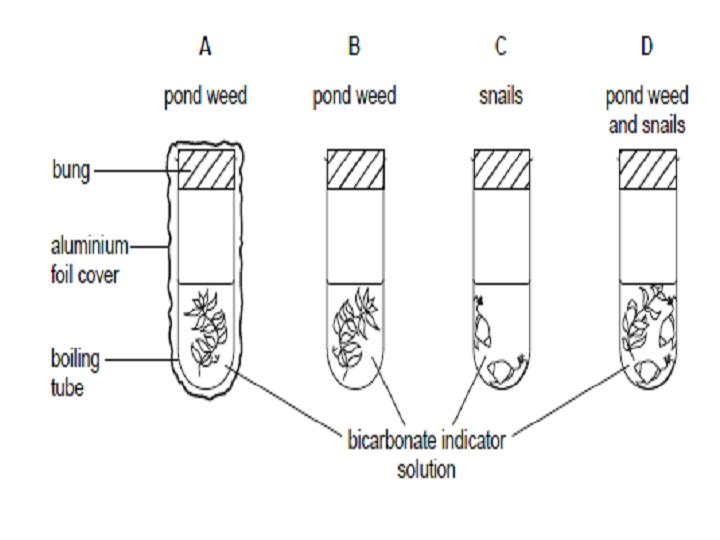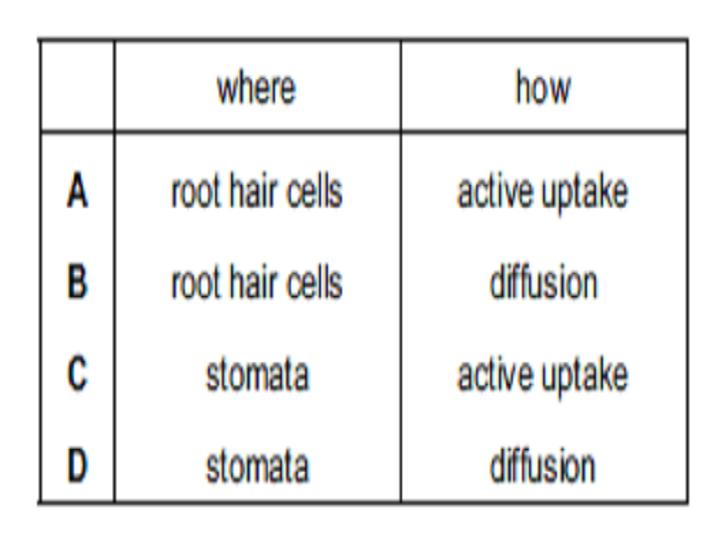Plant Nutrition And Transport Trivia Quiz!
(188).jpg)
Explore the dynamics of plant nutrition and transport in the 'Plant Nutrition and Transport Trivia Quiz!' Delve into photosynthesis, cellular structures, and water transport mechanisms. This quiz assesses understanding of key biological processes in plants, essential for students and enthusiasts eager to deepen their botanical knowledge.
- 1.
Which graph shows the effect of temperature on the rate of photosynthesis?
- A.
A
- B.
B
- C.
C
- D.
D
Correct Answer
D. DExplanation
Photosynthesis is controlled by enzymes. High temperature will denature the enzymes. So the graph is the same as that of the enzyme.Rate this question:
-
- 2.
In which conditions will a plant photosynthesise fastest?
- A.
A
- B.
B
- C.
C
- D.
D
Correct Answer
B. BExplanation
Increase in rate of carbon dioxide concentration and optimum temperatureRate this question:
-
- 3.
The graph shows the amount of oxygen produced by a green plant during a 24-hour period. Which letter represents midnight?
- A.
A
- B.
B
- C.
C
- D.
D
Correct Answer
D. DExplanation
A - early morning, 3pm, no sunlight, no photosynthesis, B-C , day time and evening, photosynthesis takes place. D - midnight, the level of oxygen declines.Rate this question:
-
- 4.
The diagram shows one type of plant cell. What type of cell is it?
- A.
Epidermal cell of a leaf
- B.
mesophyll cell of a leaf
- C.
Root hair cell
- D.
Xylem cell
Correct Answer
B. mesophyll cell of a leafExplanation
epidermal cell, root hair cell, xylem - no chloroplast, mesophyll cell - chloroplasts for photosynthesisRate this question:
-
- 5.
Four regions of a green leaf are listed. 1. air space 2. spongy mesophyll cell 3. stoma 4. xylem vessel In which order does a molecule of water, transported from the stem, pass through these regions into the air surrounding the leaf?
- A.
A
- B.
B
- C.
C
- D.
D
Correct Answer
C. CExplanation
Water is transported by xylem vessels to the leaf xylem. Water enters the spongy mesophyll cells by osmosis. Water forms a layer outside the walls of mesophyll cells. Water evaporates into water vapour into the intercellular air spaces. Water vapour diffuses out of the stomata by transpiration.Rate this question:
-
- 6.
The diagram shows a transverse section from the middle of a root of a dicotyledonous plant. In which tissue are sugars and amino acids transported?
- A.
A
- B.
B
- C.
C
- D.
D
Correct Answer
B. BExplanation
Xylem is found in the centre of the root forming a star shape. The large cells thickened with lignin are the xylem cells which transport water and mineral ions from roots to stems to leaves. Phloem are much smaller found mostly at B. A - xylem, C and D - root cortical cellsRate this question:
-
- 7.
During translocation in plants, what substance is moved from which organ to which organ?
- A.
A
- B.
B
- C.
C
- D.
D
Correct Answer
B. BExplanation
Phloem - transports sucrose and amino acids (food) from leaves to roots by TRANSLOCATIONRate this question:
-
- 8.
The diagram shows a section of a stem. Which tissue transports sugars and amino acids from the leaves to other parts of the plant?
- A.
A
- B.
B
- C.
C
- D.
D
Correct Answer
B. BExplanation
A is the cortex cell, B is the phloem - transports sugars and amino acids. C is the xylem near to the centre. D is the pith.Rate this question:
-
- 9.
When a complete ring of bark is removed from the trunk of a tree, it will eventually die because this action cuts off the supply of
- A.
Mineral salts to the leaves.
- B.
Nutrients to the roots.
- C.
Oxygen to the roots
- D.
Water to the leaves.
Correct Answer
B. Nutrients to the roots.Explanation
Bark - phloem tissues, no sucrose and amino acids transported by phloem from leaves to roots.Rate this question:
-
- 10.
When a leafy shoot is placed in a solution of dye, which part becomes most heavily stained?
- A.
Guard cells in the leaves
- B.
Palisade cells in the leaves
- C.
Phloem cells in the stem
- D.
Xylem vessels in the stem
Correct Answer
D. Xylem vessels in the stemExplanation
xylem transports water and minerals from roots to the leaves.Rate this question:
-
- 11.
The diagrams show transverse sections from the root and the stem of a plant. Which tissues carry amino acids in solution?
- A.
Root (1) and stem (3)
- B.
Root (1) and stem (4)
- C.
Root (2) and stem (3)
- D.
Root (2) and stem (4)
Correct Answer
A. Root (1) and stem (3)Explanation
xylem vessels are mostly found in the centre of the root and stem sections.Rate this question:
-
- 12.
A young plant may wilt when dug up and re-planted in another place. What causes this?
- A.
The leaves lose less water.
- B.
The roots cannot take up mineral salts.
- C.
The stem cannot transport water.
- D.
The surface area of the root is reduced.
Correct Answer
D. The surface area of the root is reduced.Explanation
When the plant is dug up, some of the roots are damaged or torn away. Hence, less roots results in less surface area for water uptake by osmosisRate this question:
-
- 13.
Four tubes, A, B, C and D are left in sunlight for one hour. The bicarbonate indicator solution in each tube is red at the start of the experiment. Bicarbonate indicator solution stays red if there is no change in carbon dioxide concentration. The indicator goes yellow if carbon dioxide concentration increases and purple if the carbon dioxide concentration decreases. In which tube does the colour change to purple?
- A.
A
- B.
B
- C.
C
- D.
D
Correct Answer
B. BExplanation
Bicarbonate indicator solution will change to yellow when it is acidic - presence of CO2.
If less CO2 and more O2 due to photosynthesis, the indicator changes to purple - less CO2.
B - photosynthesis takes place, so more O2 than CO2, purple.
Respiration - breaks down glucose to release energy and CO2, the indicator turns yellow.Rate this question:
-
- 14.
Where and how does carbon dioxide enter a plant?
- A.
A
- B.
B
- C.
C
- D.
D
Correct Answer
D. DExplanation
Carbon dioxide enters the leaves through stomata by a diffusion process. The gas diffuses into the intercellular air spaces and then dissolves in the water layer outside the mesophyll cells.Rate this question:
-
- 15.
_________________ traps light energy and converts it into chemical energy for the formation of glucose.
Correct Answer
Chlorophyll
chemicalExplanation
Chlorophyll traps light energy not chloroplast which is just an organelle containing chlorophyll.Rate this question:
- 16.
The cell wall of xylem vessels is made of ___________ to provide support to the plant. It also helps to prevent bending of stem caused by wind.
Correct Answer
lignin
support
bendingExplanation
The cell wall of xylem vessels is made of lignin, which provides support to the plant. Lignin is a complex polymer that gives rigidity and strength to the cell walls, allowing them to withstand the pressure exerted by water and provide structural support to the plant. Additionally, lignin helps to prevent the bending of the stem caused by wind, as it adds stiffness and resistance to deformation.Rate this question:
- 17.
The graph shows how the rate of photosynthesis in a plant varies with light intensity at two different carbon dioxide concentrations. The temperature is kept constant at 20 °C. Which factor is limiting the rate of photosynthesis at point X?
- A.
Oxygen concentration
- B.
Chlorophyll availability
- C.
Light intensity and carbon dioxide concentration
- D.
Water availability
Correct Answer
C. Light intensity and carbon dioxide concentrationExplanation
Limiting factor - factor required in minimum amount. As light intensity increases, the rate of photosynthesis does not continue to increase. Other factors will help to increase the rate of photosynthesisRate this question:
-
- 18.
The diagram shows a photosynthesis investigation. The plant has leaves that are green in the middle and white round the edges. Which leaf areas lack only one factor needed for photosynthesis?
- A.
P and Q
- B.
P and R
- C.
Q and S
- D.
R and S
Correct Answer(s)
A. P and Q
C. Q and SExplanation
R - green with chlorophyll, sunligh, water and CO2. all factors present. Q - all except chlorophyll - 1 factor missing P - no chlorophyll and CO2 - 2 factors missing S - no CO2 - 1 factor missingRate this question:
-
Quiz Review Timeline +
Our quizzes are rigorously reviewed, monitored and continuously updated by our expert board to maintain accuracy, relevance, and timeliness.
-
Current Version
-
Feb 02, 2024Quiz Edited by
ProProfs Editorial Team -
Apr 29, 2010Quiz Created by
Moetest9




